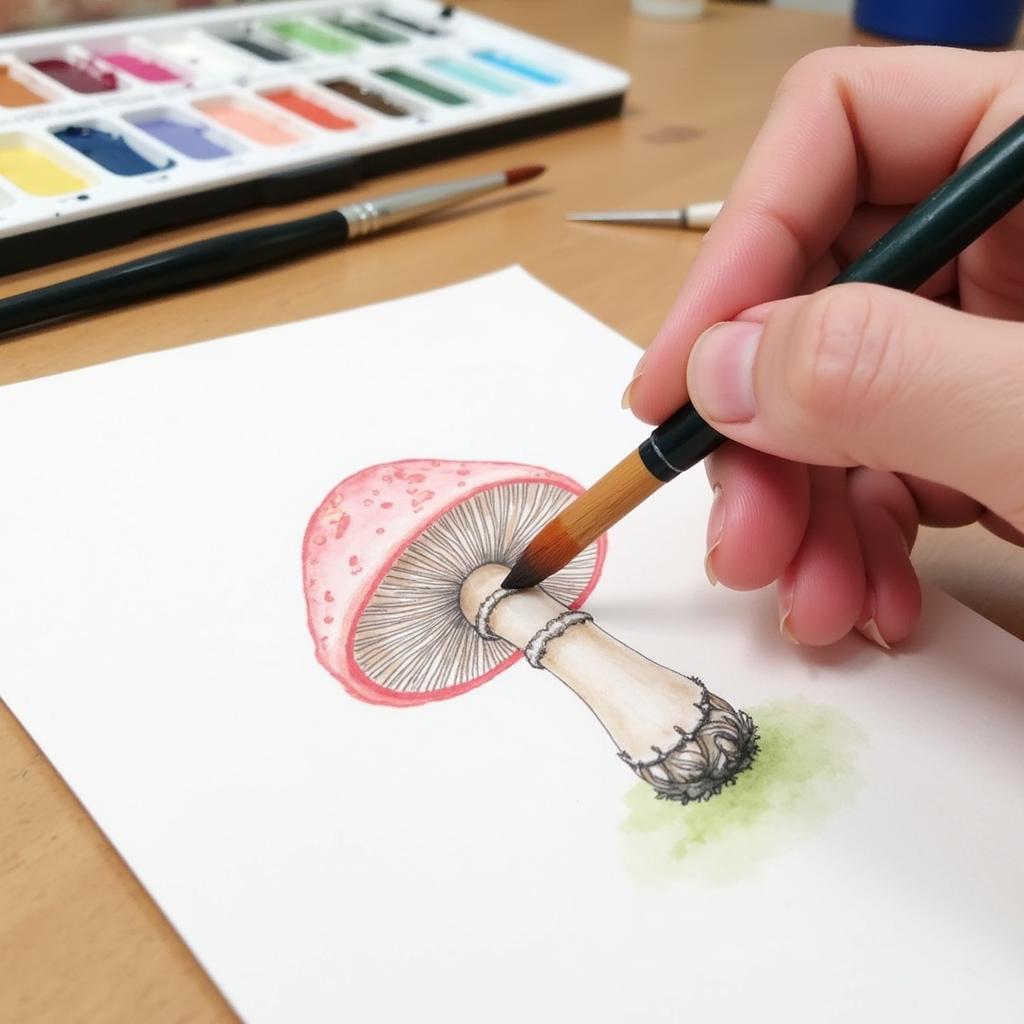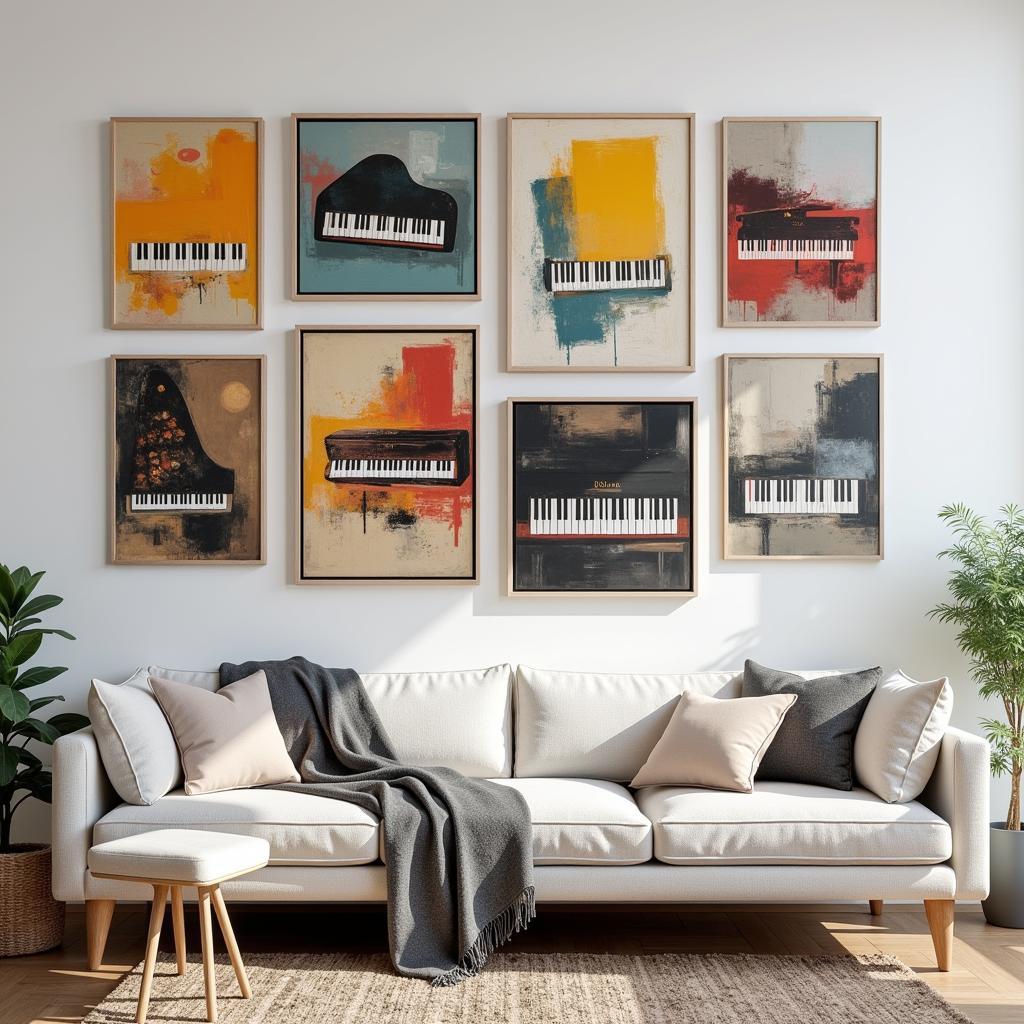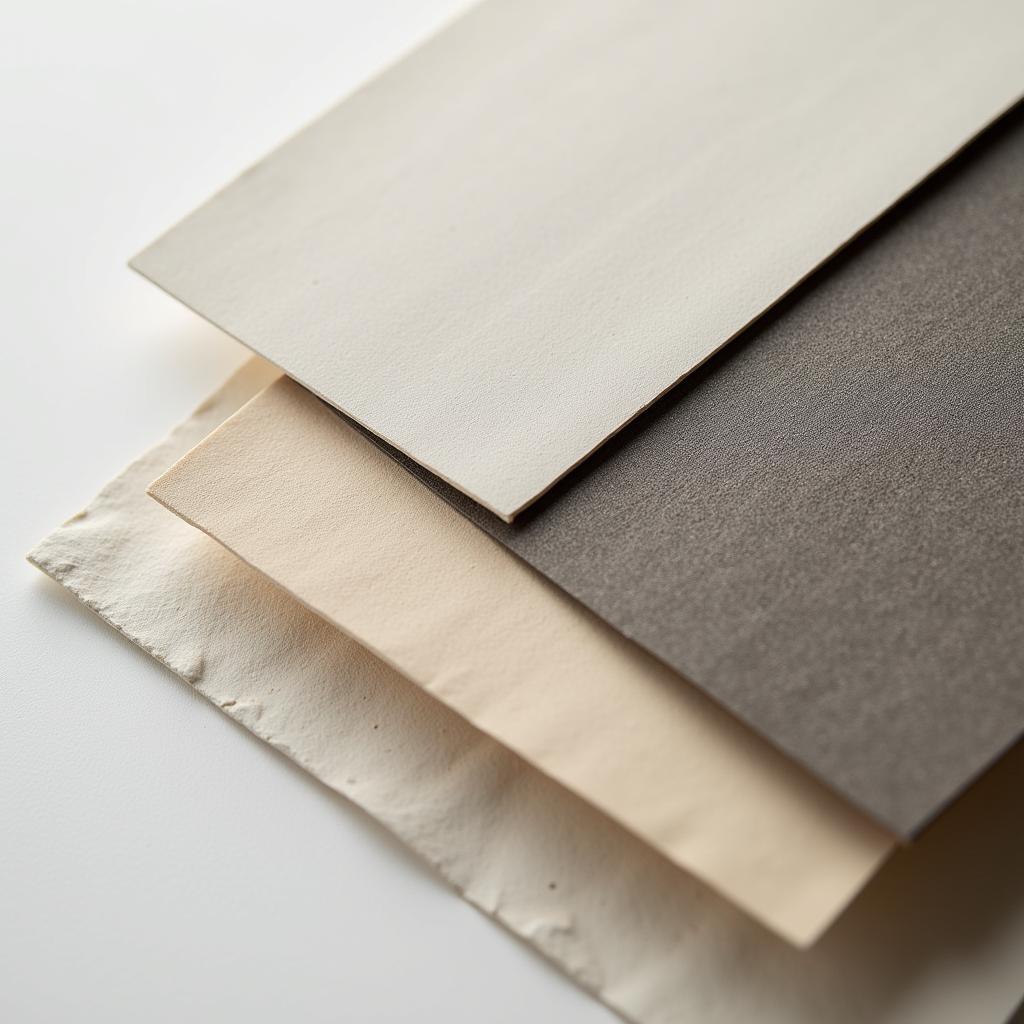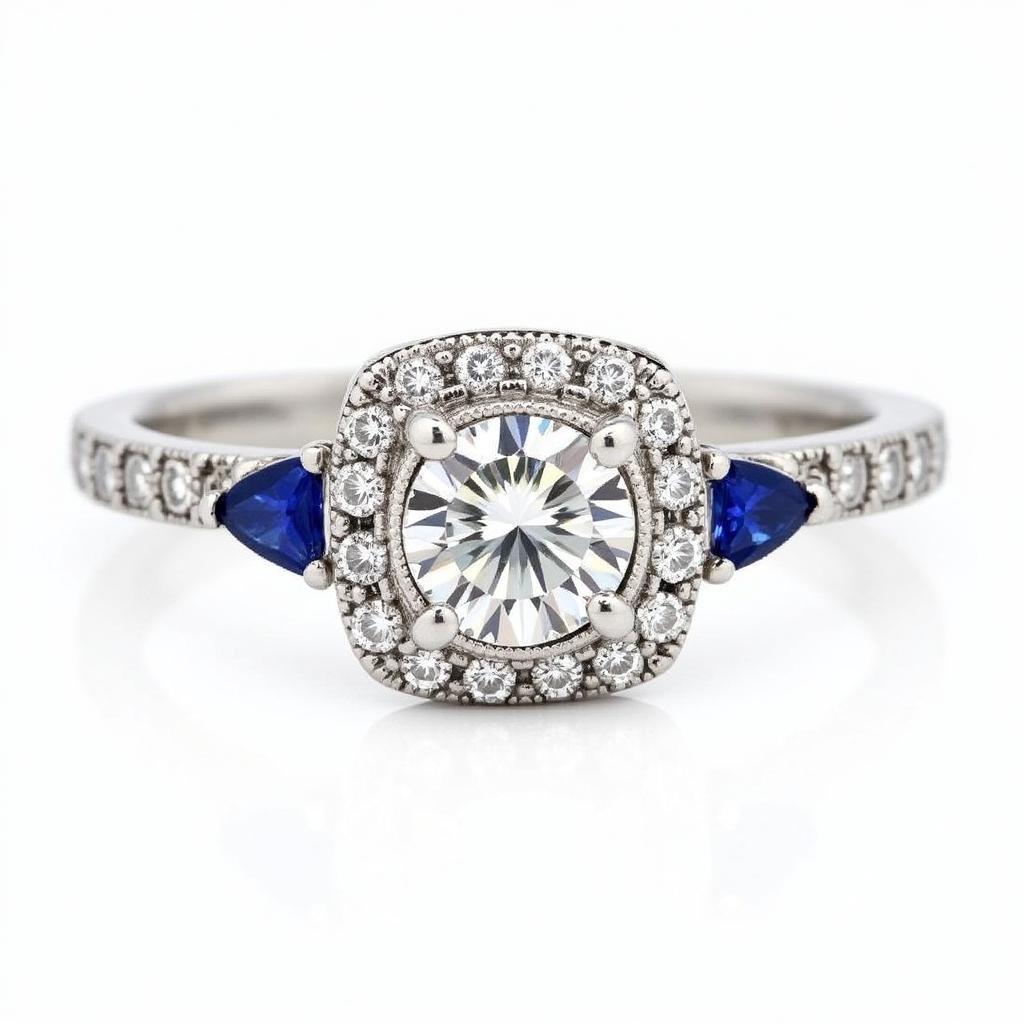Exploring the World of Mushroom Botanical Art
Mushroom Botanical Art has captivated nature enthusiasts and artists for centuries. This unique art form combines scientific accuracy with artistic expression, creating stunning visuals that celebrate the intricate beauty of fungi. From delicate watercolors to detailed pen and ink drawings, mushroom botanical art offers a fascinating glimpse into the hidden world of these often-overlooked organisms. Let’s delve into the rich history, diverse techniques, and inspiring possibilities of this captivating art form.
A Deeper Look at Mushroom Botanical Art: History and Significance
The practice of depicting mushrooms in art dates back centuries, intertwined with both scientific study and artistic appreciation. Early botanical illustrations often featured mushrooms alongside other plants, showcasing their medicinal and culinary uses. During the Victorian era, mushroom botanical art experienced a surge in popularity, with intricately detailed illustrations adorning scientific publications and field guides. This era saw the rise of prominent botanical artists who specialized in fungi, meticulously documenting their diverse forms and colors. These historical artworks serve as valuable records, contributing to our understanding of mushroom taxonomy and evolution.
Mastering the Art of Mushroom Botanical Illustration
Creating compelling mushroom botanical art requires both artistic skill and a keen eye for detail. Understanding the unique characteristics of each species is crucial for accurate representation.
- Observation: Careful observation is paramount. Spend time studying the mushroom’s form, texture, and color variations. Note the intricate details of the cap, gills, stem, and any unique features.
- Materials: Choose appropriate materials based on your desired style. Watercolor paints offer a delicate and translucent effect, ideal for capturing the subtle hues of mushroom caps. Pen and ink allows for precise line work, highlighting intricate details and textures. Colored pencils can be used to create vibrant and layered depictions.
- Technique: Develop your technique through practice. Start with simple sketches and gradually work towards more complex compositions. Experiment with different shading and highlighting methods to create depth and dimension.
 Mushroom Botanical Art: Watercolor Techniques
Mushroom Botanical Art: Watercolor Techniques
Diverse Techniques in Mushroom Botanical Art
Beyond traditional methods, artists are constantly exploring new and innovative techniques in mushroom botanical art. Digital art offers exciting possibilities, allowing artists to manipulate images and create unique effects. Photography also plays a significant role, capturing the beauty of mushrooms in their natural habitats.
- Digital Art: Digital painting software provides a versatile platform for creating mushroom botanical art. Artists can experiment with different brushes, textures, and color palettes, achieving a wide range of artistic styles.
- Photography: Macro photography allows for breathtaking close-ups of mushrooms, revealing intricate details often invisible to the naked eye. These photographs can serve as inspiration for botanical illustrations or stand alone as works of art.
- Mixed Media: Combining different mediums, such as watercolor and pen and ink, can create dynamic and visually appealing artwork. This approach allows artists to explore different textures and layering effects, adding depth and complexity to their creations.
Why is Mushroom Botanical Art Important Today?
Mushroom botanical art continues to thrive in the 21st century, playing a vital role in both scientific and artistic communities. These artworks serve as valuable educational tools, raising awareness about the importance of fungi in ecosystems.
- Conservation: Mushroom botanical art can inspire conservation efforts by highlighting the beauty and fragility of these often-overlooked organisms.
- Education: Accurate and detailed illustrations are essential for identifying and classifying different mushroom species, contributing to our understanding of fungal biodiversity.
- Inspiration: The beauty of mushroom botanical art can inspire artists and nature enthusiasts alike, fostering a deeper appreciation for the natural world.
Dr. Eleanor Vance, a renowned mycologist, emphasizes the significance of this art form: “Mushroom botanical art bridges the gap between science and art, making the complex world of fungi accessible to a wider audience.” Her sentiment echoes the importance of visual representation in communicating scientific knowledge. Similarly, artist and naturalist, James Hawthorne, notes, “Capturing the essence of a mushroom in art requires not only technical skill but also a deep understanding of its unique characteristics.” This highlights the symbiotic relationship between artistic expression and scientific observation in mushroom botanical art.
Conclusion
Mushroom botanical art is a captivating art form that celebrates the intricate beauty and diversity of fungi. From traditional watercolor paintings to modern digital illustrations, this art form continues to evolve, inspiring artists and nature enthusiasts alike. By combining scientific accuracy with artistic expression, mushroom botanical art provides a unique window into the fascinating world of mushrooms. So, grab your brushes, pencils, or digital stylus, and embark on your own exploration of mushroom botanical art! morel mushroom art
FAQs
- What materials are commonly used in mushroom botanical art?
- How can I improve my mushroom identification skills for botanical art?
- Are there online resources for learning mushroom botanical art techniques?
- Where can I find inspiration for my mushroom botanical art projects?
- What are some notable contemporary mushroom botanical artists?
- How can I preserve my mushroom botanical artwork?
- What is the historical significance of mushroom botanical art?
Other Questions
- How do I get started with mushroom botanical art as a beginner?
- What are some tips for photographing mushrooms for artistic purposes?
For further information, check out our other articles on related topics such as nature journaling and botanical illustration.
Need help? Contact us 24/7: Phone: 02462573573, Email: [email protected]. Visit us at: Savico Megamall, 7-9 Đ. Nguyễn Văn Linh, Gia Thụy, Long Biên, Hà Nội 10000, Việt Nam.




